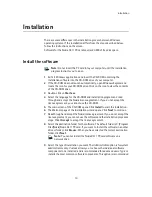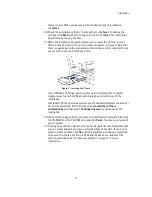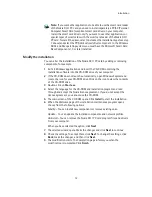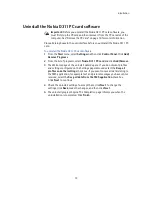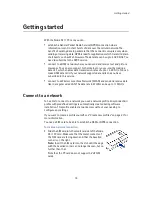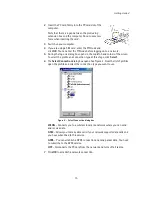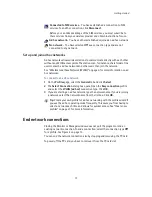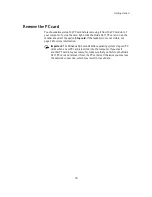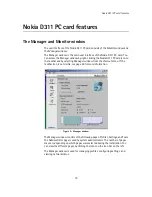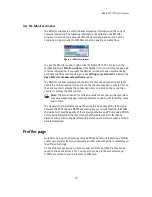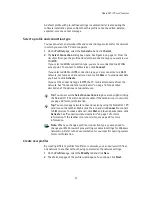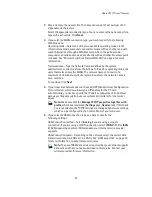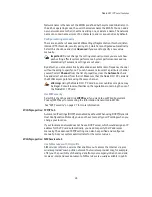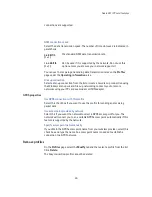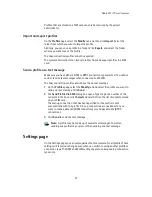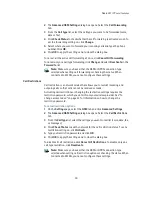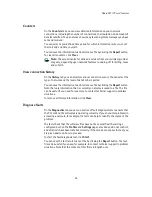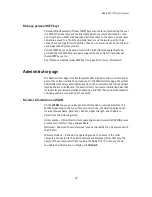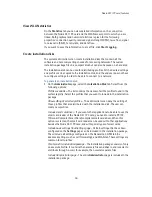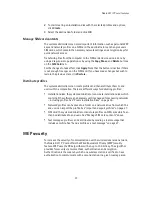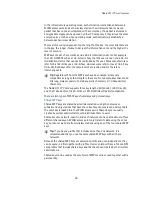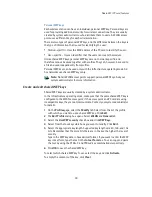
Nokia D311 PC card features
24
Network name is
the name of the WLAN as defined by the system administrator. In
the ad hoc operating mode, the users themselves name the WLAN. You can add a
new network name to the list, edit an existing one, or delete a name. The network
name can contain a maximum of 32 characters, and is case-sensitive by default.
Configure settings manually
There are a number of advanced WLAN settings (fragmentation threshold, listen
interval, RTS threshold, security policy, etc.), which are configured automatically.
Select this check box and click
Advanced
if you want to specify a new value
manually.
Important:
Do not change the settings manually unless you are sure how
each setting affects system performance. System performance may drop
dramatically if automatic settings are not used.
By default, you are automatically allocated an available radio frequency channel
without needing to specify one. You can, however, also select a particular channel
yourself: select
Channel
from the list of properties, clear the
Automatic
check
box and select a channel from the list. Make sure that the Nokia D311 PC card and
the WLAN access point are using the same channel.
Warning:
Using the Nokia D311 PC card in some countries or regions may
be illegal. Consult local authorities on the regulations concerning the use of
the Nokia D311 PC card.
Use WEP security
Select this check box and click
WEP Keys
if you want to use Wired Equivalent
Privacy (WEP) keys for protecting the information transmitted in WLAN.
See “WEP security” on page 37 for more information.
WLAN properties: TCP/IP tab
Automated IP settings (DHCP) are enabled by default. When using DHCP (Dynamic
Host Configuration Protocol), you do not have to modify your IP settings when you
change your location.
If your local area network does not have a DHCP server, which would assign an IP
address for the PC card automatically, you need to specify the IP addresses
manually. The advanced TCP/IP settings can also be specified and configured
manually. Ask your system administrator for the correct values.
WLAN properties: SIM Services tab
Use SIM services with this profile
SIM services refers to a service that enables you to access the Internet via your
wireless provider’s own public network. Your wireless provider may, for example,
offer you the possibility of checking data from your company intranet, send and
receive e-mail, and save documents. SIM services are usually available in public
Summary of Contents for D311
Page 1: ...User Guide Issue 1 ...

